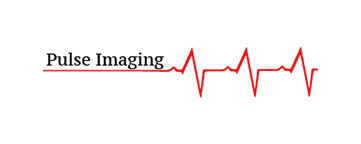Lipid Profile
Also Known as: Coronary Risk Panel, Lipid Panel, Fasting Lipid Panel Non-fasting Lipid Panel
What is a Lipid Profile test?
In Lipid Profile, the amount of specific fat molecules called lipids in the blood is measured by the lipid panel. It measures a variety of substances, including many types of cholesterol, as a panel test. The lipid panel is used to assess the risk of cardiovascular diseases such as heart disease, heart attack, and stroke in both children and adults.
Lipids are fat molecules found in the blood. Cholesterol and triglycerides are two main types of lipids transported inside lipoprotein particles. The lipid panel examines your blood to detect various kinds of lipids, including:
Total Cholesterol: This determines your total cholesterol level in the blood.
LDL(Low-density lipoprotein) Cholesterol: This type of cholesterol, referred to as "bad cholesterol," can build up in blood vessels and raise your risk of cardiovascular disease.
HDL (High-Density Lipoprotein) Cholesterol: This type of "good cholesterol" helps reduce LDL buildup.
Triglycerides: This type of fat in excess is linked to cardiovascular disease and pancreatic inflammation.
What is the test used for?
The lipid profile helps evaluate cardiovascular health by measuring cholesterol in the blood. Too much cholesterol can clog the arteries and blood vessels, causing damage and increasing the risk of heart disease, stroke, and heart attack.
A lipid profile can be ordered for a variety of reasons, including:
Screening: This is routine testing that determines whether your cholesterol is normal, borderline, intermediate, or high-risk.
Monitoring: Lipid testing can monitor the cholesterol in your blood if you have abnormal findings from previous tests or other risk factors for heart disease.
Treatment response: A lipid profile can be used to evaluate your response to treatment if you've been told to make lifestyle modifications or take cholesterol medications.
Diagnosis: Lipid levels can be tested to diagnose various medical conditions, such as liver diseases.
Why and when do you need this test?
A lipid profile test may be necessary for a range of situations. The test can be used for screening, diagnosis, or monitoring, depending on the medical condition.
Screening is the process of detecting a health problem before any apparent signs or symptoms arise. The lipid profile can evaluate patients at high risk of cardiovascular disease before they progress to conditions such as heart disease or a heart attack. Screening can help prevent problems by providing early warning, but it can also be costly, cause anxiety, and lead to possibly unnecessary treatments. Various specialists weigh in on the facts and reach different judgments about who should be examined and how frequently they should be screened.
Adults without risk factors for cardiovascular disease should get their screening done every five years. Depending on a person's medical situation, a doctor may recommend a first lipid test in their 20s, 30s, or 40s. People with one or more risk factors are more likely to be screened frequently and to have their first test at a younger age. The following are some examples of risk factors:
- Age ( over 45 for men, and 50-55 for women)
- A prior result demonstrated high cholesterol.
- History of cardiovascular disease
- Smoking
- Obesity or being overweight.
- Unhealthy diet consumption
- Lack of physical activity
- Blood pressure that is too high (hypertension).
- Having a first-degree relative diagnosed with heart disease at an early age (Men under 55, women under 65).
- Diabetes or is at risk of developing diabetes.
You may need a lipid test every year or every few years if you have one or more risk factors. The results of previous tests may determine the testing frequency.
Some experts recommend annual lipid testing for adults over the age of 65. If a patient's levels appear stable, other doctors may reduce or stop regular screening.
Screening in children can begin as soon as risk factors are discovered, which can happen as early as the age of two. Depending on the test results and risk assessment, follow-up testing is usually done every few years. Even if a child has no risk factors, a lipid profile test may be performed before puberty begins. After the age of 16, another test may be taken. Because changes in blood lipids during puberty can affect test accuracy, the test is done less frequently in children aged 12 to 16 who do not have risk factors. Children at a high risk of developing familial hypercholesterolemia are screened more often. Because this condition can develop heart problems in children at a young age, screening is commonly done at the age of three, nine, eleven, and eighteen.
After a person has had high cholesterol on a previous test or has had a past cardiac event such as a heart attack or stroke, the lipid profile is frequently used for continuous cardiovascular risk monitoring. People at a higher risk of the cardiovascular disease frequently adjust their lifestyles or take drugs to help minimize their risk. A lipid profile can be used to monitor their response to treatment and make any adjustments to their treatment plan.
While most lipid tests are used for screening or monitoring, they are occasionally employed to diagnose health conditions that affect lipid levels, such as pancreatitis, chronic renal disease, or hypothyroidism.
What kind of sample is required for the test?
A healthcare provider will use a small needle to obtain a blood sample from a vein in your arm. A small amount of blood will be collected into a test tube or vial once the needle is inserted. When the needle goes in or out, it may sting a little. It usually takes less than five minutes to complete this process.
Do you need to prepare for the test?
Before your blood is obtained for laboratory lipid testing, you must usually fast for 9-12 hours. This implies you should not eat anything before the exam and only drink water. Lipid testing without fasting is possible in some cases, but you should check with your doctor's office ahead of time to see if you need to fast and always follow any pre-test instructions given to you.
Are there any risks to this test?
Having a blood test carries relatively little risk. You or your child may experience minor pain or bruising where the needle was inserted, but most symptoms disappear quickly.
What do the test results mean?
Your lipid profile's results are reported for each type of cholesterol and triglyceride. Milligrams per deciliter of blood (mg/dL) are the units of measurement.
For each portion of the standard lipid test, the optimal or target level is indicated below:
Total cholesterol levels: T should be less than 200 mg/dL,
HDL (good) cholesterol levels: should be above 60 mg/dL.
LDL (bad) cholesterol levels: less than 100 mg/dL (less than 70 mg/dL for diabetic people).
Triglycerides: 150 mg/dL or less
Borderline, intermediate, and high-risk values are those that do not meet these targets. Higher-than-target total cholesterol, LDL, and triglyceride levels, as well as lower-than-target HDL levels, can all increase the risk of cardiovascular disease.
The results of your tests will be interpreted in light of your overall health and other risk factors. Many doctors utilize special risk calculators to decide the appropriate next steps based on your test results, age, and other factors. Continued cholesterol monitoring, lifestyle modifications, and drugs may be recommended to lower cholesterol and reduce cardiovascular risk,
Related tests: Total cholesterol test, Direct LDL cholesterol , HDL cholesterol test, Triglycerides test, VLDL cholesterol test
Frequently ordered together
Cholesterol Total
Creatine Kinase (CK)
High Density Lipoprotein HDL
Low Density Lipoprotein LDL
Triglycerides
Lipid Panel with reflex to direct LDL
B-type Natriuretic Peptide BNP
Cardio IQ-N-terminal pro-BNP
PROBNP
Cholesterol and Lipids test
Troponin I
Advanced Lipid Panel Cardio IQ
14.00$
17.00$
18.00$
21.00$
16.00$
25.00$
99.00$
129.00$
49.00$
94.00$
129.00$
133.00$














